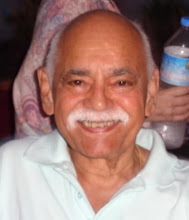It’s a good question. It implies that there
is a definite objective for advertising and that an evaluation of its
effectiveness will be undertaken.
In reality, few advertisers bother with a
formal listing of objectives and even when these are formulated often consist
of general business goals. Increasing sales, brand share, distribution and so
on are not communication tasks. Advertising’s function is to inform and
persuade and these objectives are much harder to articulate and monitor.
Another problem is isolating advertising
contribution from the other elements of the marketing mix. Brand success may be
relatively more reliant on product innovation, pricing strategy, and packaging
than the advertising campaign.
Advertising in a general sense must work,
but not always and often not very efficiently. The drive to make advertising
more efficient is akin to the search for the Holy Grail. You will have heard
the quote attributed to John Wanamaker of the USA or Lord Leverhulme:
“ I know that 50% of my advertising is
wasted. The problem is that I don’t know which 50%.”
In the early half of the 20th century, Mr.
Elmo Lewis developed his AIDA model for advertising. It described four stages
for good advertising. Attract attention, make the advertisement relevant
and engaging so as to engender interest, create desire and finally
generate action in the form of a sale.
In the early 60’s, Russell Coley developed
his DAGMAR model, which stands for: Defining advertising goals for measured
advertising results. He postulated that customers went on a journey from
unawareness to awareness and comprehension of the message. If well done, this
leads to a positive attitude being formed of the brand and a conviction of its
suitability.
Stephen King, the doyen of JWT’s London
account planners warned that the nature of the advertising message may cause
success to be measured on varying time scales. A Television commercial
announcing a retail sale will have the tills ringing, or not, almost immediately.
A campaign promoting Nuclear energy will need a longer time scale for the
measurement of advertising success.
Most older advertising models are linear
and pre suppose rational decision-making. These days we know that emotional
triggers are also important. Behavioral economics is the flavour of the moment.
It seems that we have been asking the wrong
question. We cannot generalise and must be specific. The question should
be: How does my advertisement work?
Or even better: How do my customers use my advertisements?
Answers to these questions will lead to
less waste and more effective determination of the ideal advertising
budgets.


